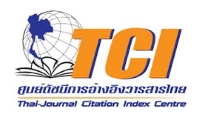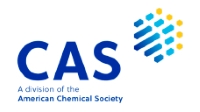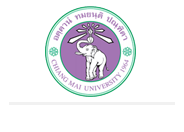JOURNAL DETAIL
Vibrio cholerae O1 El Tor Variant Isolated from Clinical and Environmental Sources in Northeastern Thailand
Paper Type |
Contributed Paper |
Title |
Vibrio cholerae O1 El Tor Variant Isolated from Clinical and Environmental Sources in Northeastern Thailand |
Author |
Bongkot Khaenda [a], Kiatichai Faksri [a, b], Warawan Wongboot [d], Thitima Nutrawong [a, b], Suwi |
Email |
chariya@kku.ac.th |
|
Abstract: Vibrio cholerae can cause severe diarrhea because of cholera enterotoxin. Within the V. cholerae serogroup O1, two biotypes are recognized: classical (CL) and El Tor (ET). The El Tor biotype is further categorized into 3 waves, based on the CTX phage genes present and the analysis of single-nucleotide polymorphisms (SNPs) in the genome. Wave 1 (CTX-1 or prototype El Tor) harbors ctxBET and rstRET, wave 2 (CTX-2) harbors ctxBCL and rstRCL, wave 3 (CTX-3) harbors ctxBCL and rstRET and variants of wave 3 (CTX-3b, 4, 5, 6, 6b) have specific SNPs in rstA and rstB genes. The presence of variant wave 3 has not been investigated in Thailand. The aim of this study was to investigate the presence of V. cholerae atypical El Tor strains (CTX-2, 3, 3b, 4, 5, 6) from clinical and environmental sources in Northeast Thailand between 2003 and 2012 by using PCR assays for genetic screening of waves 1- 3. Sequencing of rstA, rstB and ctxB genes was used to identify the presence of variant wave 3. All V. cholerae O1 isolates from clinical sources (2007-2010) belonged to variant wave 3 (CTX-6). A similar result was obtained from two of three environmental isolates, while the third showed a CTX-2 variant strain because of the absence of rstB. Most (60%) DNAs extracted directly from 80 water samples were negative for CTX phage genes; 27.5% yielded unclassified CTX genes; 3.7% contained CTX-6, 3.7% were hybrid El Tor, 2.5% were wave 2 and 2.5% were unidentified wave 3. Our findings indicate that most V. cholerae O1 in clinical and environmental sources in Northeast Thailand are CTX-6. The prevalence of atypical El Tor strains found in environmental samples suggested that the aquatic environment might be an important source of the evolution of the outbreak strains. |
|
Start & End Page |
338 - 349 |
Received Date |
2016-09-27 |
Revised Date |
|
Accepted Date |
2017-01-16 |
Full Text |
Download |
Keyword |
Vibrio cholerae, CTX phage, ctxB, rstR |
Volume |
Vol.44 No.2 (April 2017) |
DOI |
|
Citation |
[a] B.,K.,[a K.,F.,B] [d] W.,W.,[a T.,N.,B] et al., Vibrio cholerae O1 El Tor Variant Isolated from Clinical and Environmental Sources in Northeastern Thailand, Chiang Mai Journal of Science, 2017; 44(2): 338-349. |
| View:864 Download:371 | |
RELATED ARTICLE
Application of SYBR Green Real-Time PCR for Detection of Toxigenic Vibrio cholerae O1 in the Aquatic Environment
page: 588 - 598
Author:Aschana Tirapattanun, Chariya Chomvarin, Warawan wongboot and Boonnapa Kanoktippornc
Vol.42 No.3 (JULY 2015) View: 872 Download:296
page: 588 - 598
Author:Aschana Tirapattanun, Chariya Chomvarin, Warawan wongboot and Boonnapa Kanoktippornc
Vol.42 No.3 (JULY 2015) View: 872 Download:296
Copyrights © Since 2021 All Rights Reserved by Chiang Mai Journal of Science










